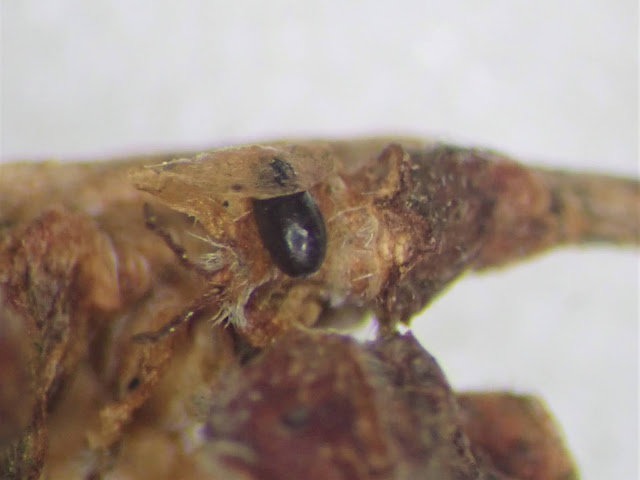Yesterday evening, whilst mooching about on FB, I was made aware of the existence of the Semudobia gall-midges which lay their eggs into developing female birch catkins. Looking on the NBN maps for each of the three species it appears that they are a widespread genus but massively under-recorded. None of the maps show records from the Skye area. Today, I duly headed into Uig Wood in search of last year's birch catkins.
The only birch to occur in the Uig area is Downy Birch. It may come as a surprise to hear that Silver Birch is entirely absent from Skye, although one apparent hybrid Silver x Downy Birch tree was found in the south a couple of years back. I didn't know if Semudobia utilised Downy Birch or if it was restricted to the nationally commoner Silver Birch, but hey - if you don't look you'll never know, right?
 |
| Yet another gorgeous day - though rather chilly in the shade on this side of the glen |
I had quite a good hunt around for Downy Birch in the woods and found maybe twenty trees. Despite spending quite a long time staring into their branches, I only found two individual catkins on one tree and none on any others! Well, that lowers my chances to a big fat zero, I thought to myself. Nevertheless, I popped my prize catkins into a pot, had a further wander around the hill and then headed straight back indoors. Oh yeah, because as of today Skye has been lumped in with the mainland and is now in Level 4 Lockdown, the highest level there is in Scotland. From Level 1 to 4 overnight, utterly ridiculous, but there you go. It is what it is, my small footprint in this world decreases in size once more.
Spilling the catkins onto a bit of plastazote beneath my microscope, I began by loosening all the seeds from the stem in order to check them for signs of galling. I soon noticed that several scales would not easily rub loose, they were fixed to the stem itself. Ooh, that's a characteristic of one of the three gall midges I was after, could I actually have jammed in on some just like that??
 |
| After teasing out all the loose seeds and scales, these ones remained attached |
The galls in the image above are the swellings on the stem with the wings of a seed directly above them. The two galls on the upper right hand side of the stem are probably the clearest ones to see. Ordinarily the seed would easily fall free from the stem, but the woody swellings have glued them tight.
I had to confirm to myself that this was indeed one of the galls I was after, even though it matched the illustrations in my gall book, so I very carefully peeled one open in search of the solitary grub within.
 |
| Solitary orange grub - that's what I'm after! |
Two species of Semudobia gall the seed itself, distorting its shape and causing an under-development of the wings. The third species is the one above, Semudobia skuhravae. There are better images than mine on this site and on this site too.
Whilst checking the catkin for more galls, I spotted a tiny black pupa hanging out from beneath a bit of scale. It's definitely not one of the gall-midges, in fact I think it looks more hymenopteran than dipteran, if so I guess it's an inquiline or parasitoid species. I'll try to rear it through, though my success rate is rather 50:50 with these things.
 |
| Approximately 2mm in length |
I found this paper online regards the various parasitoids of Semudobia larva and it even provides an identification key to the adult wasps that emerge! It's a European key, though written in English, but it may well cover all of the British occuring species too. I'm really hoping it is a wasp and that it does emerge, just so I can have an attempt at identifying it. Somehow, I rather doubt there are many folks in Scotland looking at these.




Sweet. Had a quick look today at a couple of Silver Birch in my square and found even less accessible catkins than you. Zero.
ReplyDeleteholy moly. That could be a garden tick if I get really lucky...
ReplyDeletegreat sleuthing and interesting write up. Keep the posts coming. Need them more than ever!
ReplyDelete